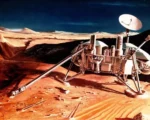Ancient Meteorite Impact: A Catalyst for Early Life on Earth

Meteorite Impact: A Crucial Catalyst for Early Life on Earth
Approximately 3.26 billion years ago, a massive meteorite collided with Earth, far surpassing the one that famously contributed to the extinction of the dinosaurs. Research led by geologist Nadja Drabon from Harvard University posits that this monumental event may have been instrumental in fostering the development of early life forms. Contrary to the typical associations of such impacts with widespread destruction, this particular collision is thought to have unleashed a cascade of changes that created favorable conditions for certain microorganisms to thrive.
Drabon and her team focused on rock formations in the Barberton Greenstone Belt of South Africa, a region that harbors evidence of the ancient impact. Their studies indicate that the collision would have produced extreme environmental conditions, including intense heat that vaporized significant portions of the ocean’s surface. The impact also generated a dense cloud of debris, which blocked sunlight for a considerable period. While this lack of light would have posed challenges for photosynthetic organisms, it simultaneously facilitated the release of critical nutrients from the ocean floor, including phosphorus and iron, into the surface waters.
This influx of nutrients presented a unique opportunity for microorganisms equipped to exploit these resources. The research highlights that microbes capable of metabolizing iron flourished in the aftermath of the impact, leading to significant population growth. This shift in the microbial landscape suggests that the consequences of the meteorite impact were not solely detrimental; rather, they may have provided a much-needed boost to early life by reshaping the ecological environment in a way that favored specific organisms.
The implications of Drabon’s findings extend beyond the history of life on Earth; they challenge traditional narratives surrounding catastrophic events in geological history. By demonstrating that such impacts can create opportunities for life rather than solely destroy it, this research adds a nuanced understanding of the resilience and adaptability of living organisms in the face of dramatic environmental shifts. The study encourages further exploration into how similar processes may have influenced the evolution of life on other planets, expanding our understanding of the potential for life in the cosmos. Ultimately, the meteorite impact serves as a reminder of nature’s complex interplay between destruction and creation, illustrating how adversity can lead to unforeseen advancements in the tapestry of life.

















